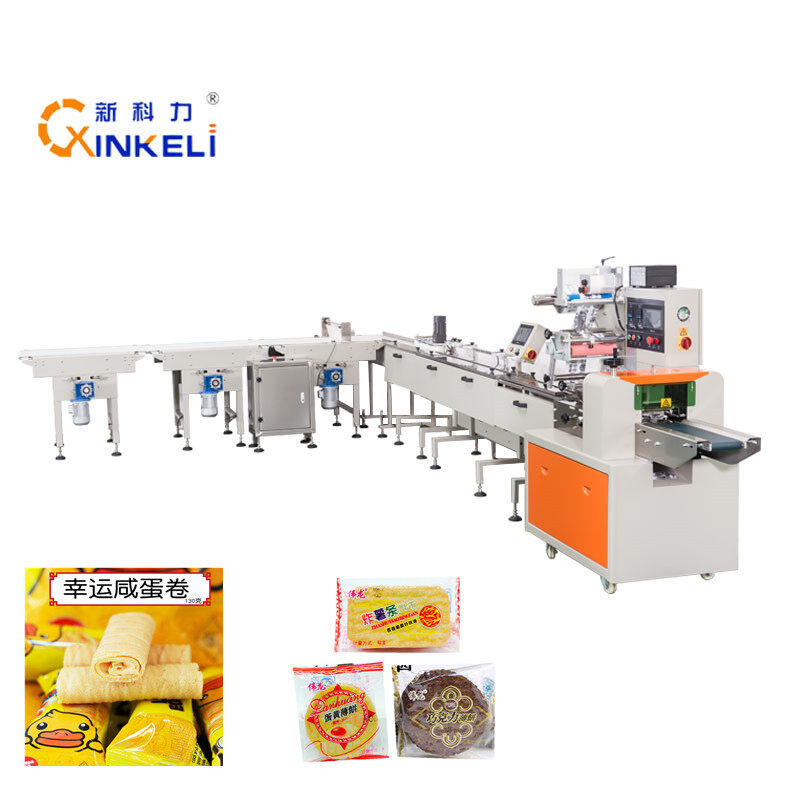In the ever-evolving world of manufacturing and packaging, efficiency and precision are paramount. The food industry, in particular, has witnessed a significant transformation with the integration of advanced technology to meet consumer demands and regulatory requirements. One of the remarkable innovations in this realm is the auto food feeding packaging machine line.
What are Auto Food Feeding Packaging Machine Lines?
Auto food feeding packaging machine line is a series of sophisticated systems combined together, which are designed to automate the whole packaging process for food and various other products. They are engineered to handle a wide range of packaging tasks, from filling and sealing to labeling and final product inspection.
Key Components and Features
Hopper Systems: The auto food feeding packaging machine line often incorporates hopper systems that store and dispense the product into the packaging unit. Hoppers can vary in size and design to accommodate different types of products, whether they are dry goods, liquids, or delicate items.
Conveyors and Transport Mechanisms: A vital part of the packaging line is the conveyor system, which facilitates the smooth and consistent movement of products through various stages of the packaging process. Automated systems use conveyors to transport items between different stations, ensuring an uninterrupted workflow.
Weighing and Portioning Units: Precision is crucial in food packaging, and these machines come equipped with weighing and portioning units that ensure each package contains the exact amount of product. This eliminates variations and minimizes waste, ensuring cost-effective packaging.
Benefits of Automation in Food Packaging
The implementation of the auto food feeding packaging machine line provides several advantages. It not only enhances productivity but also improves the overall quality of packaged products.
Higher Efficiency: These automated systems operate at a consistent speed, reducing production time and costs.
Accuracy and Precision: By eliminating human error, they ensure that each package meets the specified weight and quality standards.
Hygiene and Sanitation: The closed and controlled environment of these machines minimizes the risk of contamination.
Customization: They are adaptable to various product types and packaging requirements, offering flexibility to manufacturers.
Reduced Labor Costs: Automation decreases the need for manual labor, leading to substantial savings.
The Functionality and Operation
Seamless Material Flow
Auto food feeding packaging machine line guarantees a seamless material flow. Products move from the hopper to the packaging unit in a synchronized and orderly manner, reducing bottlenecks and improving overall production efficiency.
*The system controls the speed through a linkage mechanism, ensuring that the front feed replenishes material quickly when the end feed is insufficient. The front feed slows down when the end feed is full. Additionally, if the back feed stops, the packaging machine and front feed will also stop.
Precise Portion Control
The weighing and portioning units ensure that each package receives the exact amount of product, thereby maintaining consistency and quality. This precision is invaluable, especially in the food industry, where portion control is critical.
Hygienic Considerations
Maintaining high levels of hygiene is non-negotiable in the food industry. These automated systems are designed with materials and features that are easy to clean and sanitize, meeting strict hygiene standards.
Auto Food Feeding Packaging Machine Line
Customization and Flexibility
Manufacturers can tailor these machines to accommodate a wide range of product types and packaging formats, allowing for quick adjustments to meet market demands or changing regulations.
Integration with Other Equipment
Auto food feeding packaging machine line is often designed to integrate seamlessly with other equipment, such as labeling machines, capping machines, and quality control systems, creating a comprehensive packaging solution.
Applications and Industries
Food and Beverage Sector: These automated systems have found extensive use in the food and beverage industry, packaging a variety of products like snacks, grains, powders, and beverages. The ability to maintain product quality and hygiene is particularly critical in this sector.
Pharmaceutical Industry: Precision and sanitation are equally important in pharmaceuticals. Auto food feeding packaging machine line is used to package tablets, capsules, and various medical products securely.
Cosmetic and Personal Care Products: In the beauty and personal care industry, these machines assist in packaging products like lotions, creams, and perfumes, ensuring consistent quality and precision.
Conclusion
Auto food feeding packaging machine line is at the forefront of the packaging revolution, driving efficiency, precision, and quality across multiple industries. As the demand for consistency and hygiene in packaging grows, these automated systems will remain a critical component of modern manufacturing processes, ensuring that products reach consumers in the best possible condition.








